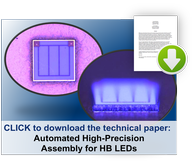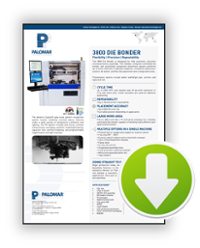In this series, we are exploring the ins and outs of LEDs. Last week, we began our LEDs series with “A - Attach process” and “B - Boule”. This week, we continue our journey through the ABCs of LEDs.
C – Conductivity
In a recent LEDs Magazine article, Steve Jackson explained: “Most materials have the ability to conduct heat, some better than others. This ability is also referred to as thermal conductivity and is measured in watts per meter kelvin (W/mk). Different materials offer a broad range of thermal conductivity. For example, diamonds have a very high level (typically 2200 W/mK), but are obviously too expensive for use in lighting applications. Copper has a decent level of thermal conductivity (typically 390 W/mK), but has two significant drawbacks compared to aluminum — copper weighs approximately three times more than aluminum and typically costs up to five times as much. Aluminum doesn’t conduct heat quite as well (237 W/mk maximum), but offers the weight and cost advantages that are important in many SSL applications.”
Optimal thermal conductivity of high-brightness LEDs is achieved through the eutectic bonding process through the Pulsed Heat System stage. HB LEDs applications today require maximum thermal transfer to achieve performance results. Eutectic soldering provides high-quality, low-risk performance. The number and closeness of LEDs requires good thermally conductive die attach to keep the LEDs as cool as possible.
thermal transfer to achieve performance results. Eutectic soldering provides high-quality, low-risk performance. The number and closeness of LEDs requires good thermally conductive die attach to keep the LEDs as cool as possible.
Precise LED attach applications can also be manufactured using silver-filled conductive epoxy dispensing and daubing methods on a 3800 Die Bonder.
D – Defects of Interest (DOI)
In LED testing, most LED manufacturers rely on inspection tools to analyze wafers and document defects of interest (DOI). A systematic approach is needed in separating yield-impacting DOI from nuisance (there can be potentially a lot of nuisance defects that do not cause yield loss).
In an article in Solid State Technology Journal, Rebecca Howland, Ph.D., and Tom Pierson of KLA-Tencor discussed that a “sapphire substrate itself may contain a host of defect types, including crystalline pits that originate in the sapphire boule and are exposed during slicing and polishing; scratches created during the surface polish; residues from polishing slurries or cleaning processes; and particles, which may or may not be removable by cleaning. When these defects are present on the substrate, they may be decorated or augmented during GaN epitaxy, resulting in defects in the epi layer that ultimately affect device yield or reliability.”
Stay tuned next week for more on LEDs!
Additional resources:
|
Automated High-Precision Assembly
|
Pulsed Heat System
|
Sources:
LEDs Magazine: Aluminum extrusions match SSL thermal management needs in many applications, http://ledsmagazine.com/features/10/5/3.
LEDs Magazine: “Improve LED manufacturing via in-line monitoring and SPC”, http://ledsmagazine.com/features/10/7/10
Solid State Technology Journal: “The gleam of well-polished sapphire”, http://electroiq.com/blog/2013/01/the-gleam-of-well-polished-sapphire/.
----
Janine Hueners
Marketing Specialist
Palomar Technologies, Inc.


